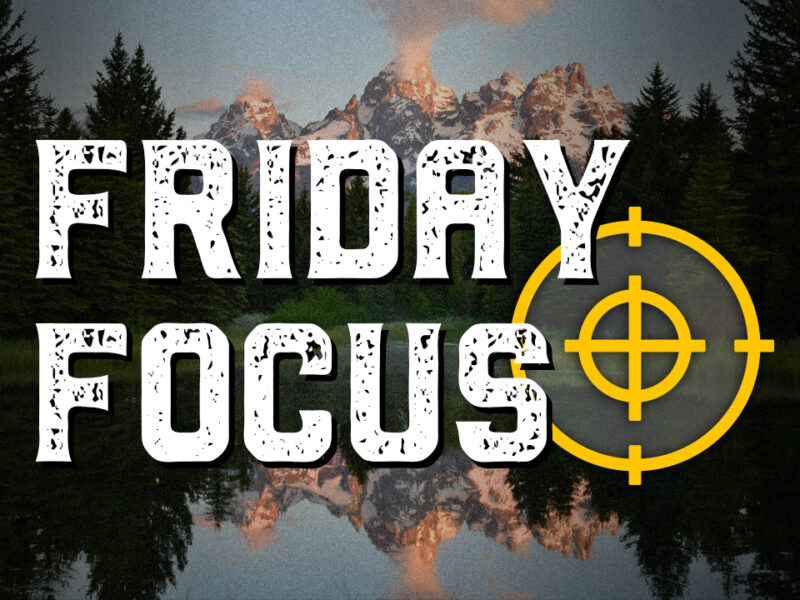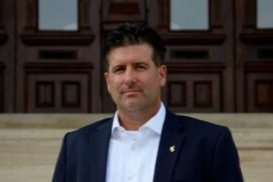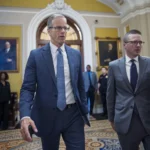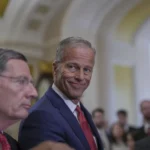WYOMING SCHOOLS AT A CROSSROADS: Targeting School Safety
Deputy Superintendent of Public Instruction says Wyoming schools are safe, but offers suggestions for improvements
- Published In: Other News & Features
- Last Updated: Sep 16, 2022

By Elizabeth Sampson
Special to the Wyoming Truth
Just three months after Chad Auer became Deputy Superintendent of Public Instruction, the nation was rocked by another school shooting—this time in Uvalde, Texas.
Auer’s boss, Superintendent of Public Instruction Brian Schroeder, asked him to quickly assess Wyoming schools’ readiness to handle or prevent a similar tragedy. Over the summer, Auer hosted roundtable discussions with district superintendents, school boards, teachers, students, law enforcement agencies and community members statewide to determine what is working and what needs improvement.
Auer’s multi-faceted background in education, local government and law prepared him for the task. He spent nearly 20 years as a classroom teacher and school administrator in Colorado; held a district-level position in Denver where he worked to revitalize the city’s failing public schools; and served as the mayor of Firestone, Colo. Auer earned a law degree from the University of Wyoming and clerked at a Cheyenne law firm before joining the education department last winner.
Through his research, Auer found that Wyoming schools have a good handle on school safety, as districts began focusing on it long before school shootings became a recurring horror. “But that doesn’t mean we don’t have opportunities to improve,” he acknowledged.
Auer recently sat down with the Wyoming Truth to share his findings and explain where the department can take a lead to improve school security statewide. What follows are excerpts from the conversation.

What are your main takeaways from the roundtable discussions?
Auer: A theme that came up was there are so many resources available to schools and districts for school safety and security. Homeland security will do site audits; law enforcement has trainings. Cybersecurity and Infrastructure Security Agency has a lot of resources for school districts. Region 5 BOCES has secured a grant that has resources for threat assessments. There are a ton of resources available to school districts, but that also presents a challenge because a lot of districts are really busy doing a lot of things, not just school safety and security. We need to figure out a way to catalyze and get districts aware of and connected with a lot of these resources that are just sitting there waiting for them.
What role does mental health play in the big picture of school safety and security?
Auer: A good school safety and security plan needs to also consider mental health support on the preventative side. . . . . I think we are in the beginning stages of effectively addressing that. We have a need to do more to support the mental health issues and needs of the kids but also the staff. A lot of the leaders that I talked to said schools are a central anchor institution in a community, so we really need to not just think about students and staff, but also a community in general. There are also some realities that a lot of school districts are very rural, and they just simply don’t have access to enough mental health support. School districts would love to recruit and retain more school counselors or social workers, but they are kind of hard to find.
Is there room in the local school budgets for more counselors?
Auer: Bigger districts may have more room, smaller districts may not. There may be some grant opportunities, or that may be a legitimate ask to the legislature to maybe look at some additional funding.
How do people feel about school resource officers?
Auer: Everybody is overwhelmingly in support of school resource officers, and frankly they would love to have more. We’ve really learned that it takes a special person to be a school resource officer. It’s not just going through the law enforcement academy. We want school resource officers, but we want to have a more sophisticated approach to how we deploy those people. How do we honor where they are coming from and their training in law enforcement but compliment that with training in education. I feel like [the department] has a role to play in that moving forward.
Rural districts present a pretty unique set of challenges. Response times are a concern. As we know with all of these events, minutes really matter. Long response times are a concern. Rural communities are trying to come up with some solutions. I don’t know that anybody has really hit it on the head yet, but we’re working on it. That’s another spot for [the department] to play a role.
What might help rural districts with response times?
Auer: We have the park service, we have the state parks, we have game and fish, we have search and rescue. We have all of these agencies that could help us and may reduce response times if the individuals at those agencies are ready and trained. We’re looking at ways of trying to broaden the scope of who can show up.
Are there other areas of concern?
Auer: There are a number of older school buildings in the state. Many of those older school buildings were not built with school safety and security in mind. Many have their central administrative offices right in the center, which makes it hard for them to screen visitors and be a buffer between a bad actor and everybody inside. In many cases, we just may need to consider a new building.
Could new technology play a role in improving school safety?
Auer: I’ve been impressed with the amount of technologies that are available for school safety and security. There’s this system called Raptor where all visitors have to be screened. There are mobile devices that have panic buttons for teachers [to automatically communicate] with parents. Administers can hit one button and all doors automatically lock. Those technologies are expensive. Maybe if we came together as a state around some of those solutions, we could get more cost effective deployment of those, and we could have a deployment in even our most rural scenarios.
Do you have additional suggestions?
Auer: I think it would be important for [the department] to designate a staff person here not only to support trainings and advocate for appropriate building funding, but also to really be the hub of all of these resources that are available to districts. Of course, it’s precarious always to suggest we need to expand an agency, but I think this makes sense. I also think that a staff person here at the department could convene an annual conference for school district personnel, school board members, teachers, etc. to come together and learn about the latest best practices, but also to share what’s working.
Final thoughts on school safety in Wyoming?
Auer: Probably the biggest strength is that we are a small community as a state. We are taking care of our kids. We are, as a community, thinking about and keeping our eyes open, being aware of possible threats or problems. That’s probably your best defense is people being aware.
This is an ongoing conversation, so if people have things that they would like me to know, they can always email me. I know local schools and districts are looking for thoughtful input on this issue. It’s important that we have thoughtful civil conversations about everything in education, but this one in particular.













